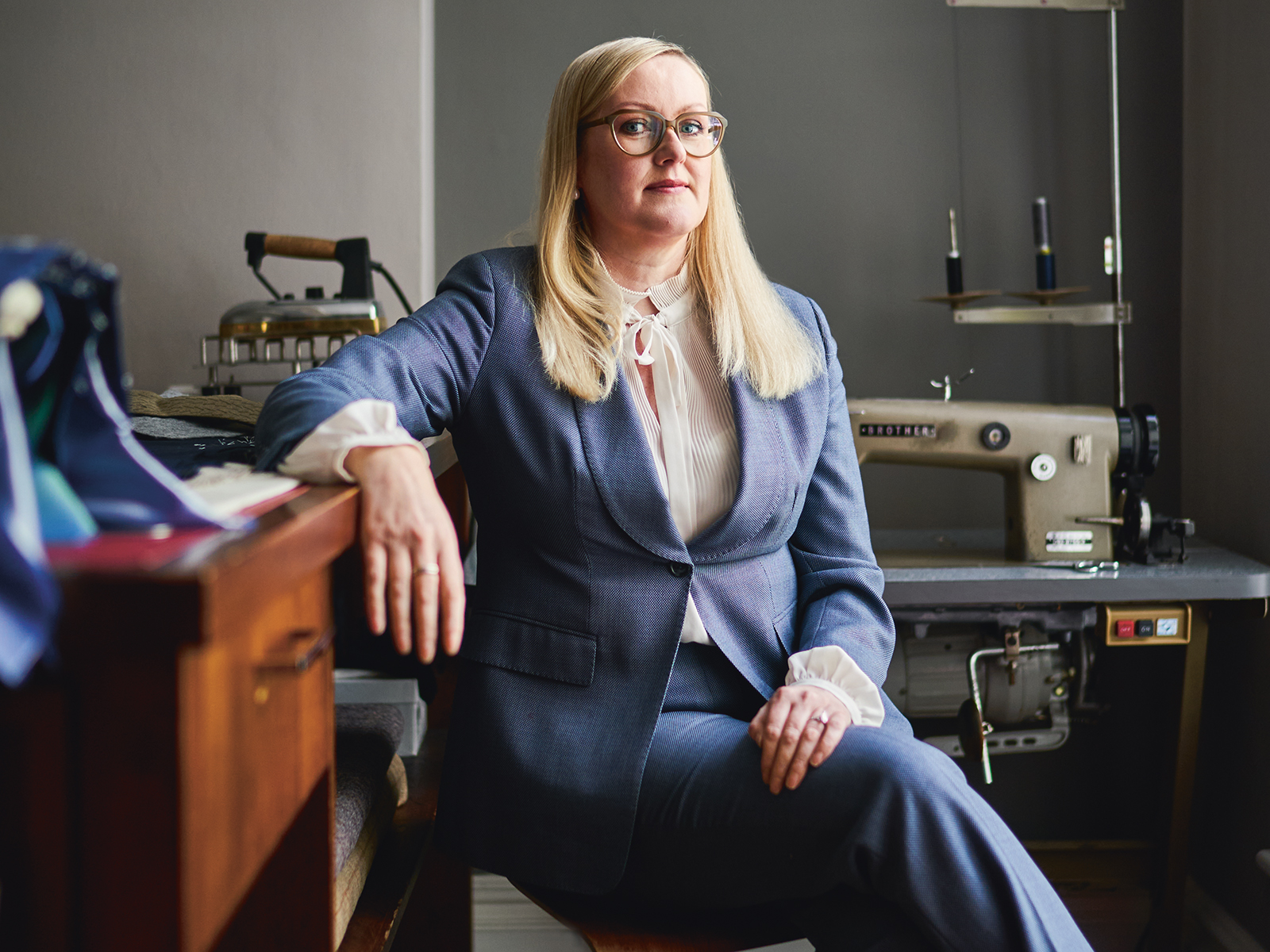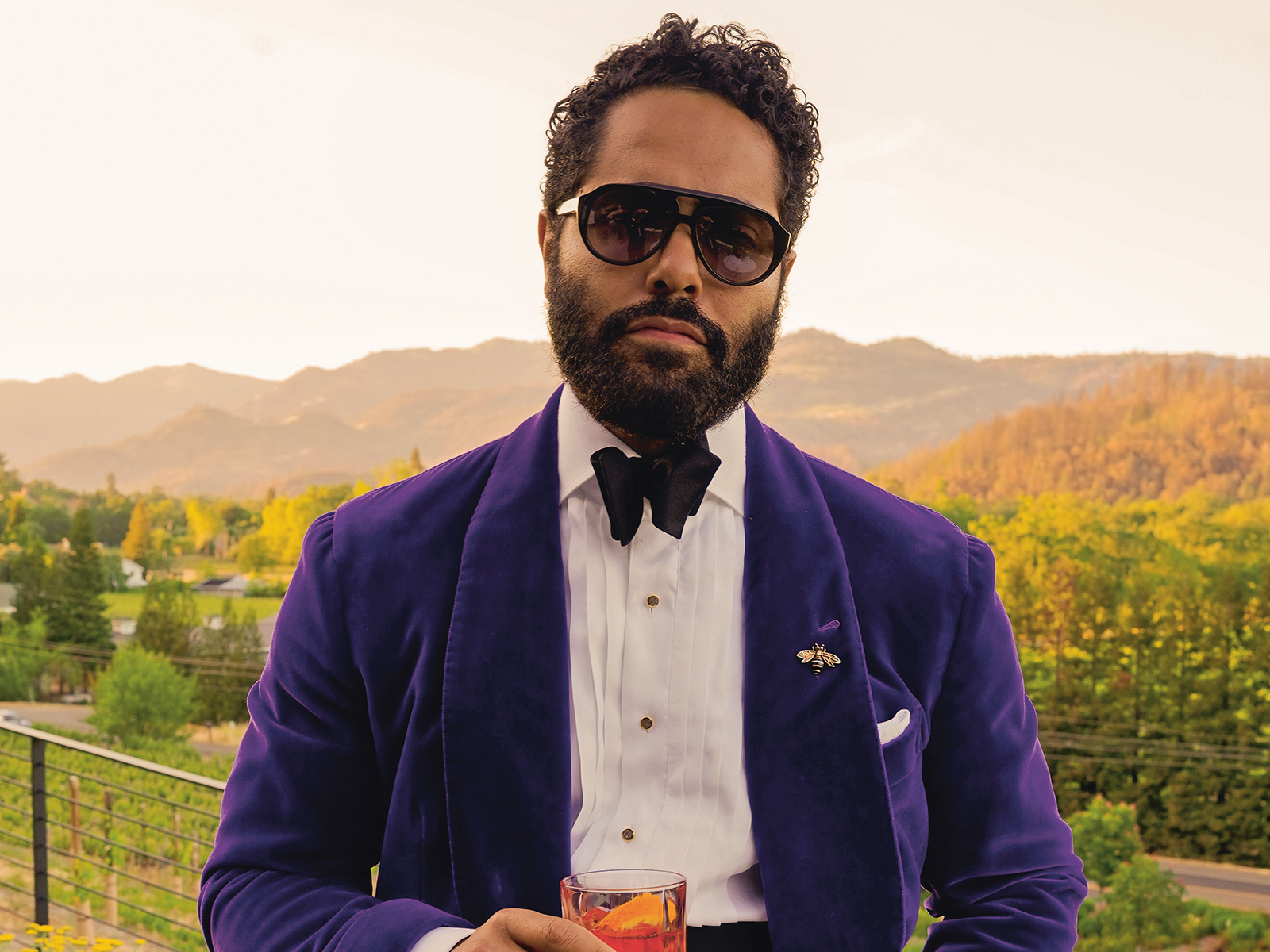Meet the Designers Breathing New Life into Tailoring
The world of tailoring is being shaken up thanks to a new wave of designers who are cut from a different cloth
The world of tailoring is being shaken up thanks to a new wave of designers who are cut from a different cloth
It’s easy to think that the world’s citizens will never feel the need to look smart again. First came the seemingly unstoppable rise of sports-inspired clothing over the past decade, which has made wearing a suit seem hopelessly old fashioned. Next came lockdown, with its tsunami of sweatpants and all things stretch. As we emerge from the latter, we might easily assume that a love of tailoring, suits, and formal dressing will become a niche interest, but for those not yet ready to surrender to a life of loungewear there are moves afoot to subvert the narrative of fine tailoring’s decline.
“It was worrying during the lockdown that people’s need for tailoring would vanish, but, thankfully, there’s still a real demand,” says Kathryn Sargent, London’s only female master tailor, whose atelier is located on the world-famous Savile Row. Formerly head cutter at Gieves & Hawkes, the storied military-influenced outfitter, Sargent set up her eponymous label in 2012 to offer a new take on bespoke tailoring for both men and women.

“I’m getting more and more commissions to take things to couture levels of uniqueness and detailing, like adding embroidered details,” says Sargent. “During lockdown last year, for example, I made a 1930s-inspired suit with a hobble skirt with a placket [covered opening], curved cuff embroidery, concealed buttons, and interchangeable embroidered collars for a very discerning female client.”
Our customers want to invest in better quality… The idea of having lots of low-quality garments not only creates waste, it also shows a lack of care—Myles Kusaba
Similar moves are afoot at nearby Gormley & Gamble, Savile Row’s first label founded by and made exclusively for women. Given that tailoring has traditionally been such a masculine business, the brand is reinventing the very notion of what a suit might be and who it is intended for.
“If done correctly, modern tailoring reflects the playful power of femininity to me,” says Phoebe Gormley, the founder of Gormley & Gamble, who set up her brand at the tender age of 20 in 2014. She started making clothes at the age of 13, inspired by her grandmother, who was an excellent seamstress in her own right. “Taking the suit our fathers wore and yearned to take off at the end of the day—a suit that felt drab, restrictive, and heavy—and reimagining it as something vivacious, powerful, and a little rebellious is my mission,” Gormley adds.

Gormley & Gamble is committed to sustainability as well as artisan practices—cornerstones of the tailors who aspire to flourish in today’s ethically sensitive market. “I am really proud to champion the artisan mills in northern England and Scotland that we work with,” says Gormley. “While so much of the fashion industry is looking elsewhere and desperately trying to make clothes ever cheaper to sell on for higher prices, our suits are made to last, which is why we rely on those mills and manufacturers who have a similar ethos to us.”
Reimagining the suit as something vivacious, powerful, and a little rebellious is my mission—Phoebe Gormley
In a sea of elasticated waistbands and dull, comfort-led conformity, it’s perhaps not difficult to appreciate the pure sensory pleasure of wearing and enjoying beautiful clothes that are handmade and unique. Brooklyn-based menswear label Bode is another brand at the cutting edge of this new sensibility.
“Each of Bode’s pieces is made in New York, with local tailors who cut each garment by hand,” says the label’s founder, Emily Bode. “Our fabrics are globally sourced. The quilts we use come from Massachusetts, Pennsylvania, and Ohio, while our linens and wools are from France, England, and Italy. We’ve made work jackets with strip-woven cotton from Mali, and trousers using gorgeous indigos from Côte d’Ivoire.”

Bode’s clothes are colorful and ecologically sound, which could be why they’re winning major celebrity endorsements and have been seen on Harry Styles and Jay-Z. Bode has also gained fulsome praise from The New York Times, which regards the label’s runway shows as standouts at New York Fashion Week.
These green credentials aligned to smarter dressing have reached an apotheosis with the “vegan” suits made by tailors King & Allen. Jake Allen, the label’s co-founder, says, “Our vegan suit is made entirely free from animal products—this will mean not using wool or cashmere, or even silk in the lining. We like to use cloth made from bamboo, cotton, and linen and we recently launched a fabric made entirely from recycled plastic bottles.” And it’s not only the cloth they use that follows this animal-free ethos. “We love corozo buttons,” says Allen, “which are made from the corozo nut. Each nut has a unique grain, which is as individual as your fingerprint.”
This creative yet ethical approach to tailoring sits comfortably with the newly minted hybrid model of working that business trend forecasters say we’re heading towards. A typical working week will mean time both in the office and working from home. A combination of smart and casual, flexible working, and a concern for the environment resonates with Angel Ramos, creative director at New York City’s 18th Amendment, whose name refers to the law that banned the sale of alcohol in the United States between 1919 and 1933.

As in Gormley’s case, there was a seamstress in the Ramos family too—his mother worked in the garment industry, and she made a lot of the family’s clothes. The pieces he creates today are inspired by Prohibition-era tailoring, typified by wide trousers and generously lapeled jackets—a style that’s relaxed yet formal and sits easily with our contemporary demand for comfort.
“What many of our customers realized during the lockdown is that they want to invest in better quality, even if that means they acquire less of it,” says Myles Kusaba, operations director of 18th Amendment. “The idea of having a lot of low-quality garments not only creates waste, it also shows a lack of care.”
But perhaps the label’s biggest draws are the famously stylish men it takes inspiration from. “We like to say our style is Gianni Agnelli, the elegant Italian businessman, meets Jean-Michel Basquiat, the downtown graffiti artist,” says Kusaba, referencing two icons and suit wearers who are about as far away from elasticated waistbands and sportswear as you can get.
Banner image: Kathryn Sargent at work in her Savile Row atelier. Shot exclusively for Christie’s International Real Estate by Sebastian Böttcher